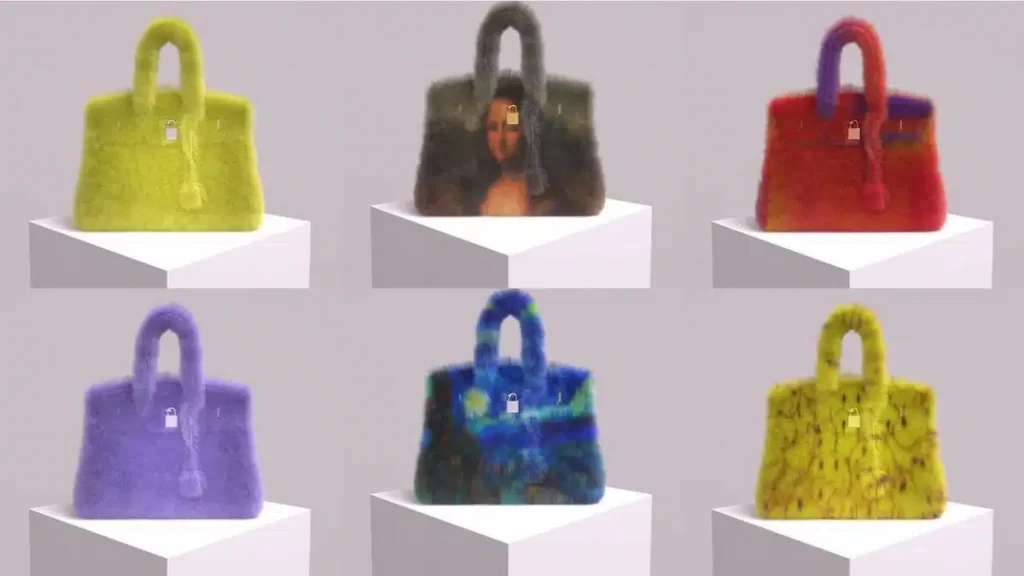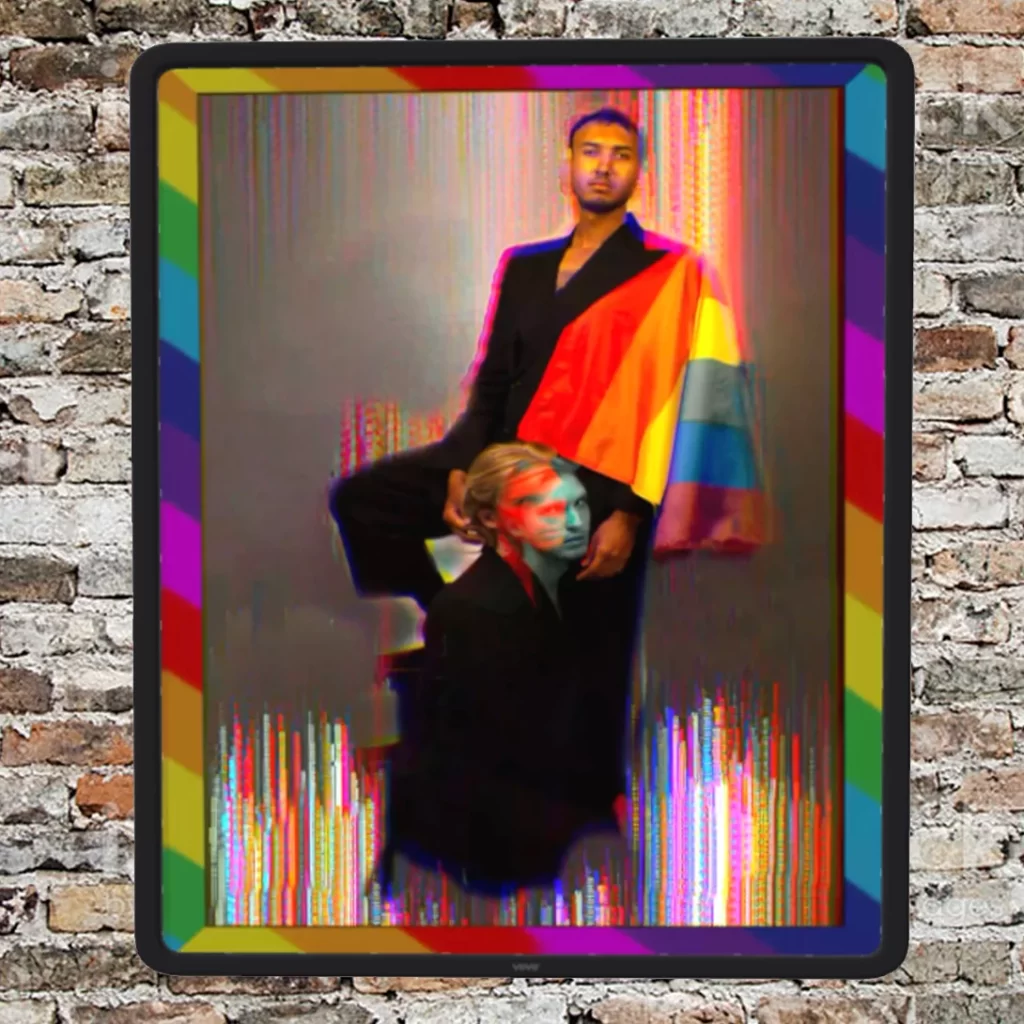Balmain X Barbie collection – Photo Source
NFT Trends in Luxury: Redefining Affluence with Creativity and Web3
(This is an ongoing series about the Impact of Web3 on the Fashion/Luxury Space. Click HERE for PART 1 of this series)
Trend 4: Unlocking the Power of Digital Certificates
Janina Vinklere, Zurich-based Janina Vinklere, a digital transformation strategist with Vividly, Ambassador for Exclusible, and recognized as one of the top one hundred women in tech by Women of the Future, have insights into the realm of digital certificates offer a glimpse into a trend poised to reshape the luxury landscape. She explains,
“Digital Product Passports (NFTs) are proving product authenticity, thus, allow the customer to resell their products on the luxury brand marketplace, for example. So, therefore, the lifecycle is easier. For example, it allows brands to build a unique relationship with those who go to their fashion show and claim their attendance NFT by just scanning a QR code for those who go to a fashion show, we can reach them forever through their NFT — if they wish.”
Herein lies the transformative potential of Web3. It empowers customers to define what matters most to them: be it the environment, the traceability of natural resources, or the ethical sourcing of products. Web3’s influence extends far beyond the realm of NFTs, infiltrating the supply chain and redefining the role of collectors as vocal advocates for brands.
Vinklere further elaborated, drawing from her recent gathering of forward-thinking strategists in the fashion hub of Paris,
“I attended a panel discussion at NFT Factory with gallerists of NFTs, and we all agree that there’s more transparency of the actual collector. You can see what they collect. You can understand what they love. Now we can trace and understand their collection, you can see their acquisition patterns. Emerging artists can also understand their collectors better.”
Trend 5: Digital Minimalism and Environmental Consciousness
In recent years, a notable shift in portraying affluence has unfolded, moving beyond traditional symbols like high-end cars and designer clothing. A cultural transformation champions ownership minimalism, environmental consciousness, and a preference for showcasing wealth in the digital arena.
This cultural shift has given rise to a new generation favoring digital assets, particularly NFTs, over physical possessions. The change is driven by an understanding of the limits to material wealth accumulation. In middle-class and affluent societies, the appeal of amassing physical possessions is diminishing rapidly. Environmental consciousness plays a pivotal role in this reevaluation of values.

MetaBirkins – Source
The growing awareness of climate change adds a layer of needed guilt to conspicuous consumption, pushing individuals to minimize their carbon footprint and align their lifestyles with sustainable practices.
This shift towards minimalism also extends to physical spaces. The desire to own fewer possessions and declutter living spaces has become a lifestyle goal. Rather than showcasing possessions solely for the display of wealth, individuals are turning to the digital realm, especially social media, to flaunt their prosperity through digital assets, notably NFTs.
We spoke with Emilie-Alice Fabrizi, Brand Strategist for Luxury Fashion based in Geneva. She is also the founder of The Good Token Society dedicated to promoting and supporting decentralized systems, blockchain, and token-based applications that have a positive impact on society. Fabrizi has a unique perspective, having transitioned from a fashion editor’s role in Paris to working with luxury watch companies in Switzerland. Fabrizi confirmed this,
“Today you must connect your physical and digital customers because they are the same. Young customers are your first contact digitally. In the end, they want to buy physical products at the very highest experience in person. They contact each other digitally, and then want an authentic, texture-rich memory.”
Trend 6: The Artist’s Renaissance in the Digital Age
Fabrizi offered, “We are at the very beginning of Brands understanding how Web3 works. It’s been very Techie for so long, and so hard to understand. And, people did not care. But it’s getting easier. Now we can talk about what we can do with it, and branders, and product managers can finally understand it. Though, currently, Fashion is using NFTs with a gaming mindset, and that’s all because it’s the most simple for people. Though, the true breakthrough will be with artists.”
Fabrizi said, “Digital art is not new, but until now, it wasn’t an important part of common art. It’s their moment, and artists always drive the fashion of the time. And now, because you can access art on your wall (on a flatscreen) it is exposed to all. Gucci is so smart. They have been focused for a while now on highlighting the artists using the technology, making NFTs as luxury collections. This trend will only grow! Brands are getting it, they are finding inspiration in digital art, and they are no longer afraid of the tech.”
Artists have always played a significant role in shaping fashion. Their creativity and unique perspectives have influenced clothing designs, patterns, colors, and even the way fashion is presented. Throughout history, artists have collaborated with fashion designers to create iconic pieces that blur the lines between art and fashion.
For another perspective, we interviewed Cindia Luest in Zug, Switzerland. Luest spent the earlier part of her career in consulting and in senior management for organizations like the United Nations (in the field in Central Europe) and in Swiss banking. After meeting her professional goals, she set out to pursue her passions in art, food, and travel. She is now the Author of “The Spice Temple” novel and founder of Spice Journeys, a literary, luxury, and lifestyle company with a mission to innovate storytelling. This entertainment venture is focused on publishing, creating audio/visual experiences, products for sensory storytelling, and linking narrative to the metaverse, NFTs, gaming, and luxury brand alliances.
Luest is a good example of innovation in the arts, leveraging both Web3 and Luxury approaches: she has partnerships with the finest chefs in the world, as well as luxury hotels who are both providing her insights and content for her books. Special programs are being planned for guests forIRL (in real life) and virtual events and NFT experiences (projected for 2024). Writing, and unfortunately, reading are becoming commodities. And, therefore, Luest’s approach to connecting with the best hotels from Istanbul to the Maldives represents both the flexibility of artists today and the technology of Web3 as the container for her future partnerships.
The professional experience and ability to personally connect through passion has allowed her to create meaningful relationships with those in Luxury. An enthusiastic advocate of innovation, Luest is melding her personal passion, artistry, and business know-how to garner content support from chefs, while also thinking about ways to build immersive storytelling experiences. Her dream for NFTs and AI includes collaborations with ‘real’ artists for storytelling NFTs. She believes that the NFT allows more people to access great artists, and for fans to have fine art – with meaning. She also has a clear vision for metaverse experiences, including collaborating with fashion brands, musicians and other creatives for character-led journeys.
We asked Luest about the impact of artists on luxury through technology,
”The idea that artists are driving luxury, fashion, and culture – I love that. Though, I would like to see more ‘real art’ embraced, that which is more meaningful. What I am trying to do is move beyond collectibles into a shared value between creator and buyers. Using storytelling is a way to not only build community as audiences wonder what happens next, but can also allow engagement to co-create narratives. This can be built out in IRL and Web3 experiences and Luxury real estate, culinary journeys, and cultural and art experiences present the right audience for this work, they get it.”
As always, it’s the artists who push the ideas we think are impossible and prove us wrong. NFTs as storytelling may seem vague now, but why should they remain so? Narrative stories, meaning travel and passion are what a new generation is demanding. If the world is so terribly threatened (from climate, economy and war) why not embrace the beauty of life, the meaning, and the sensuality to add to our human experience? Given that Web3 technology acts as a powerful connective engine, digital assets (and the communities they build) are giving artists who want to bridge cultures, meaning, and experience a new tool – a new way to conceptualize their audiences and their work.
So, where artists go, Fashion, and luxury follow. Luest is betting on her vision of meaning and storytelling experiences through both IRL and Web3. Let’s watch to see if she’s yet another trendsetter in this artist renaissance for Luxury, artists, and the world of Web3.


